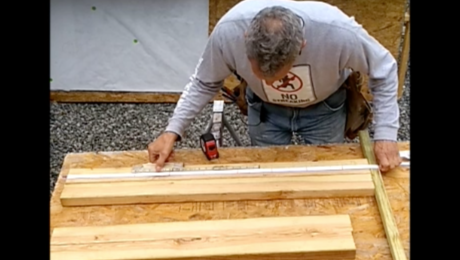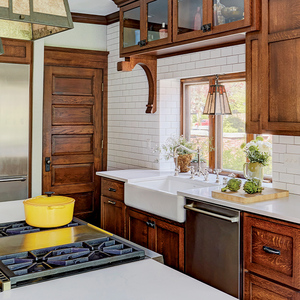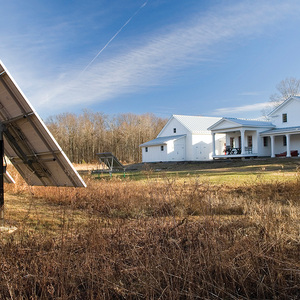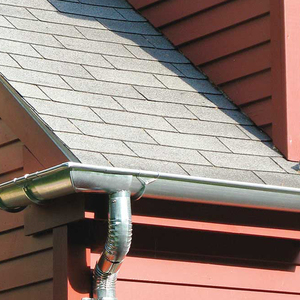I will be putting up a 32-ft long ridge beam in my garage, and there’s going to be a 4×4 post supporting it at a point about 9 feet from one end. There’s going to be a Simpson PC connector, joining the post to the ridge beam. But what concerns me is that the engineer doesn’t have any other hardware specified. The 4×4 is about 9 feet in height and at it’s lower end it sits on the garage’s attic floor. Directly under the post is the subfloor, then under that is a 2×4 interior wall going from one side of the garage to the other, in a direction perpendicular to the ridge beam. In that wall I’m supposed to position another 4×4 in line with the one above. And beneath that interior wall, we’ve dug out for a 36″ x 36″ x 12″ footing. I’m concerned that toenailing the bottom end of the top 4×4 and both ends of the bottom 4×4 won’t be enough hardware. I’ve looked all through the Simpson catalog at possibilities, and it’s just a bit confusing how to choose something. Any thoughts??? Thanks.
Barbara



















Replies
> Directly under the post is the subfloor, then under that is a 2x4 interior wall....
There needs to be blocking between the top plates of the downstairs wall and the subfloor under the post.
-- J.S.
The subfloor sits directly on top of the top plate of the interior wall. The floor joists are parallel to that wall, so the interior wall rises higher than the bottom of the floor joists, all the way to the subfloor. Therefore, there's no space to put blocking into.
Barbara
> ... there's no space to put blocking into.
OK, that's good. In that case, you already have a good solid load path, so you don't need to add anything.
-- J.S.
Unless the kids will be having motorized bumpercar races up in that room, there is no reason to doubt that properly placed toenails will do the job. Sounds like you have a direct load path to foundation
Welcome to the
Taunton University of Knowledge FHB Campus at Breaktime.
where ...
Excellence is its own reward!
Ok then, that's all I needed to know. Thanks, Piffin.
Barbara
Agreeing with Piffin and Adam and adding that what you need to realize is that these 4x4s are in compression and sitting on a wide flat surface (the floor). There should be little to no lateral forces coming into play.
Re your statement about the wall running parallel to the floor joists and framed up to the height of the bottom of the subfloor - that sounds fine but is a rather unusual way to frame it.
Hi Matt-- The wall was original to the garage, so we left it alone. Then we removed the old ceiling joists (a few 2x4's about 6' o.c.) and will be installing a new upper floor with I-joists 12" o.c., but the quirky thing is, we're installing them so that in order to maximize headroom in the garage attic (storage room), the top of the floor joists is level with the top of that existing interior wall. That's how it happened. Thanks for your advice on the 4x4's.
Barbara
now that I think about this some more, and know that the wall is original, I have a minor suggestion for improvement.The floor joists can shrink in their lifetime, maybe 3/8" so the whole plywood diaphraghm will move a bit. It the wall under it and the flooor move at different rates you could end up with a hump in the floor. So I would do two things. I would try to frame the floor such that it is 1/4" or so above the top wall plate of that existing wall, then I would drop cut a hole in the plywood subfloor just exactly large enough for the 4x4 upstairs post to seat into the hole and onto the wall below, with the added 4x4 in it carrying on down to the foundation. This method would let the floor float freely and naturally and provide additional resistance to twisting of the 4x4 by locking it in place much better than the toe nails.
Welcome to the Taunton University of Knowledge FHB Campus at Breaktime. where ... Excellence is its own reward!
Piffin, what a creative idea! Does it make any difference that the floor joists are engineered I-joists? I had the impression that they're a lot more stable than sawn lumber. Do they shrink vertically just like regular wood?
Edit: I just checked the manufacturer's manual, and it says the I joist does not shrink. So given that, Piffin, do you think the subfloor still needs to float as you describe?
Edited 8/21/2005 2:42 pm ET by BarbaraD
Somehow i missed this reply from you earlier. The I-joists have minimal shrinkage, but they do tend to bounce a bit more in some spans. That, and the fact that the plywood hole will help lock the post in place makes it an attractive solution for you. Of course, by now, you probably have it all up and in whatever way.
Welcome to the Taunton University of Knowledge FHB Campus at Breaktime. where ... Excellence is its own reward!
Actually we're just getting to settng that post right now, and the way we're gonna do it is the way you suggested: cutting a hole in the subfloor so it can sit on the wall below. We move at a snail's pace. Thanks for your help.
Barbara
glad to help
Welcome to the Taunton University of Knowledge FHB Campus at Breaktime. where ... Excellence is its own reward!
I agree with Piffin, it sounds like you have direct bearing. If you want additional insurace you could use one of simpson's straps (Coil or MST)
http://www.strongtie.com/products/connectors/HRS-ST-FHA-PS-HST-LSTA.html
The MST is quite a heavy strap and might be more then you need. I would probably ask the engineer.
Wood is Good
Adam Greisz
Since it would be easier to do now, mabey you could suggest going with a CC or CCQ style connector. The nails on a similar connector on my house (the beam is supporting a 2nd story addition) were slowly coming out, and the wood had cracked quite a bit on the vertical 4x4. The CC and CCQ are attached with heavy screws or bolts, and are ALOT more heavy duty.
View Image
Those two nails on the left hand side I pulled out with my fingers!
Rebuilding my home in Cypress, CA
Also a CRX fanatic!